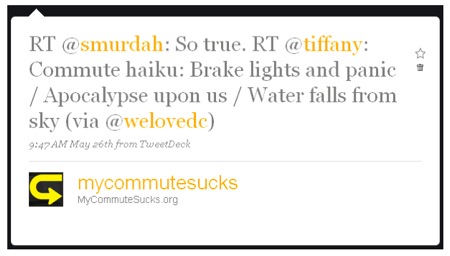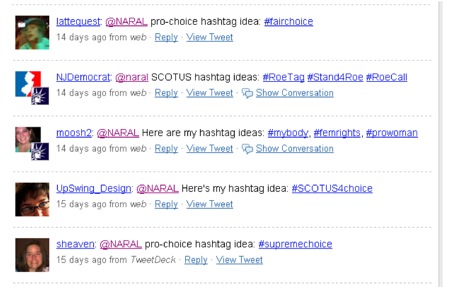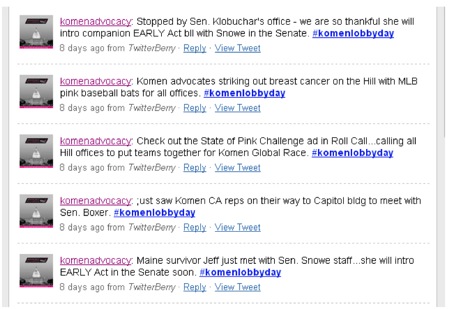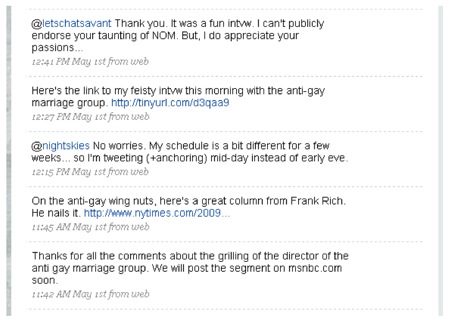Part I: Getting Started
The “Twitterverse” is going supernova, exploding with the power and energy of more than five million people worldwide reaching out for a way to stay connected. Unique website visitors to Twitter.com from the U.S. alone have clocked in at more than 17 million.1 So who are these millions? They’re not just teenagers and college students. A recent study pegs their median age at 31. And you know those folks that make something go “viral”? Yeah, well this is them. They’re more likely than any other online segment to share information and links online.2
It’s no surprise then that Twitter is attracting the attention of many nonprofit organizations looking for ways to connect with new supporters and engage constituents. Numbers aside, Twitter, like any strong social network, provides a way for your content to spread organically between people. It helps your organization be more accessible to your constituents, building the trust and strengthening the relationships that earn you strong activists and donors.
But Twitter is also different from other social networks, like Facebook. First, it’s built for speed. With only 140 characters to write, it is simply the fastest, simplest way to send out emergency updates to people who have expressed interest in your organization. Second, it’s public. Every conversation is out there, indexed by Google and other search engines, ready to become real data you can manipulate and learn from. And third, it’s friendly. Facebook also promotes information sharing, but Facebook is about keeping in touch with people you already know. Twitter, by contrast, is designed to build relationships and spread information among strangers.
Sold yet?
You shouldn’t be! Twitter is not always a perfect fit. So before you start whittling your next blog post down to 140 characters, take a look at these seven pointers to avoid a rocky start to your organization’s Twitter adventure.
1. Beware of the bandwagon.
Do NOT simply make a twitter account because everyone else is doing it—build your online presence strategically. Consider your target audience and whether Twitter is the right medium to reach them. Consider what the goals of your Twitter program will be. Do you want to position your organization as being on the cutting edge? Earn a certain number of followers? Deepen relationships with your current supporters? Reach out to a new demographic? Promote a specific campaign or project?
When you decide to move forward, make sure each of your organization’s tweets are providing value to the people you want to reach and helping advance at least one of the goals you’ve set. If you write a tweet that does neither—erase it.
2. Staff strategically.
Building and maintaining a presence on Twitter takes time. Assign someone to maintain the account who is familiar with blogs that deal with your issue or who already has experience with Twitter from his or her personal life. Decide early on what your internal process will be for oversight. Can the Twitter account manager post on a whim, or will tweets require prior approval? How can departments within your organization feed interesting information to your tweeter to share? Are there guidelines he or she must use to evaluate tweets before they launch? Will he or she have at least 10 hours a week to devote to maintaining the account and engaging with supporters?
In our experience, speed is key. The approval processes should be as streamlined as possible so that your organization can react quickly to news and respond directly to other tweeters. We’ve also seen that organizations whose Twitter account to has a personal voice—as opposed to an “official” voice or, worse yet, a transparently ghost-written one—tend to be most successful.
3. Build your base.
After you’ve posted your first tweet, it’s time to do some outreach. Start off by following any staff and interns with personal Twitter accounts. Next, think of other organizations that work on similar issues to you, and follow their accounts as well. Follow major news outlets or high-profile bloggers and journalists who cover your issue’s beat. These are great first follows because they are likely to follow you back—which means that visitors who stumble on your Twitter account will be more likely to follow you.
The next step is to reach out to your own constituents. It may not make sense to send an email to your whole list about your new Twitter account, but that doesn’t mean you can’t spread the word. Here are some ideas to help you get started:
- Link to your Twitter page from your website.
- Change your status message, post a link, or send an announcement about the new Twitter account in other social media your organization uses.
- Feature your Twitter account in an e-newsletter, or add a link to the Twitter page in your email footers.
- Reach out to bloggers and tweeters you have relationships with and ask for their help in promoting your new account.
- Add a self-updating stream of your tweets to an appropriate place on your website or blog. This doesn’t just show that you have a Twitter account, but to also that your content is worth following!
4. Return the follow.
Like “friends” on Facebook or MySpace, your “followers” are people who are monitoring all of your tweets. You should set up your organization’s account to receive an email notification whenever someone new follows you.
Follow them back immediately. That shows that your organization is listening, not just talking.
5. Keep the conversation moving.
The @ element of Twitter is how conversations start. Using it before someone’s Twitter username shows that person they’re being addressed, and most users access Twitter through a software program that will notify them that you’ve sent them a public message. If someone mentions your organization in their tweet, tweet back at them. But don’t just tweet your thanks—keep pushing the conversation along:
Super Tweet Tip: You’ll notice we’ve used a URL shortener in this example –https://tinyurl.com. This is a service (one of many!) that will take any long website address and allow you to display it in fewer characters, which is often necessary in places like Twitter where there is a character limit to your post. Two additional shorteners to take a look at are https://ow.ly and https://bit.ly, which both provide tracking mechanisms to see how many people have clicked on a shortened web address.
6. Tweet it forward.
When you read something that catches your attention and you think your followers would be interested in knowing about, spread the word. There are two primary ways to “tweet it forward”—to retweet what another Twitter user has said or to share a link directly.
Abbreviated as RT or r/t, “retweeting” means that you’re copying—character for character—what someone else has already tweeted. Make sure to leave in the username of the person you’re retweeting so that they know you’re passing along their words of wisdom.
Use a hat tip (h/t) or ‘via’ when you want to share a useful link or piece of information with your own followers that you found through another source or Twitter user, but that you want to repackage in your own way.
Super Tweet Tip: Did a supporter tip you off to a blog post, video, or article? Use the person’s Twitter username in your tweet, even if you actually heard about the news or saw the link outside of Twitter.
7. #Tag it!
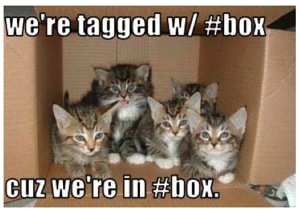 Hashtags—words preceded by a pound sign—are the primary way in which Twitter users organically organize the information they tweet, like a virtual filing cabinet. Anyone can make one up at any time, easy as #pie.
Hashtags—words preceded by a pound sign—are the primary way in which Twitter users organically organize the information they tweet, like a virtual filing cabinet. Anyone can make one up at any time, easy as #pie.
The hashtags that are being most widely used in the Twitterverse at any given moment appear in the Twitter sidebar as “trending topics.”
There are tons of websites that provide lists of every major (and minor!) hashtag, but don’t worry about them! Your new hashtag doesn’t need to be registered and there’s no way to make it official. There are, however, some conventional hashtags in use already by the progressive community—you can find a list of these at https://www.tweetleft.com.
Many organizations launch hashtags for particular campaigns, events, and issues and there are a number of free tools available to help you follow the discussion about particular hashtags, to track responses, shorten URLs, and manage your accounts. Twitter keeps a running list of their favorite tools here: https://twitter.com/downloads.
Super Tweet Tip: Use hashtags to help you grow your base of followers. If there’s a hashtag—one your organization is promoting or one that’s already conventional—that
relates to your organization’s work, follow any Twitter user who sends a tweet with the hashtag. Also, those 140 characters run out quickly—the shorter the hashtag, the better!
Part II: Tactics for Super Tweeters
Okay, so you’ve gotten your feet wet, and now you’re ready for the big time: harnessing all of the power of Twitter and its 5+ million users to truly accomplish some good in the world.
How can you take your tweets to the next level? These eight tactics used by super tweeters will help you engage your supporters, garner attention, and create meaningful change.
1. Hijack popular #hashtags.
It’s tough to make the cut and get your campaign’s hashtag in the list of “trending topics” on the Twitter homepage—doing so will usually require a lot of love from mainstream media outlets. But that doesn’t mean you can’t take advantage of all that extra Twitter traffic from Oprah, a new movie premiere, or the latest swine pandemic.
If you tweet strategically, you can harness the power of popular hashtags by including them in tweets about your own projects. Don’t spam—but take a look at the day’s trending topics, and brainstorm whether any of them have anything to do with your issue. If you get a match, take advantage of it!
In addition to trending topics, a persistently popular hashtag is #haiku. The convention is to write a haiku and then include the hashtag at the end. So, consider writing one about your organization or issue, then tag away to pull in some extra traffic. Plus, you can combine the hijack with retweets and hat-tips to maximize your reach, as our friends @mycommutesucks did in this example:
2. Target your tweets.
Because the @ character will flag for a user that someone is talking about them or to them, using it is a great way to get someone’s attention! There are many public figures on Twitter. You can find their usernames on TweetCongress, which maintains a database of members of Congress, or WeFollow, a growing database of everyone on Twitter, organized by category. Be sure to add your organization to the WeFollow directory!
A strong email advocacy campaign will likely have a specific target—and Twitter can work precisely the same way. Your organization can use Twitter to give reporters helpful leads, build up momentum around offline or email campaigns to Congress or media outlets, as in the examples below:
Unlike emails targeting the media or members of Congress, Twitter is inherently public. That means that even a small amount of noise can force your target to react—making it an incredibly powerful tool for advocacy.
Usage Note: Twitter recently changed their policy about how these sorts of messages appear for users. Be sure that when starting tweets with a user name you are not hitting the actual reply button to do so – if that button is used, Twitter will only display your tweet to people who are following both you and your target. Read more about this change on Twitter’s blog, here: https://blog.twitter.com/2009/05/we-learned-lot.html
3. Engage, don’t broadcast.
A few supporters will just parrot your signal, but most won’t—you’ll need to build relationships, and that means listening as well as talking.
Reach out to your followers to solicit their advice, offer them premiums for interacting with you on Twitter, create polls (there’s a great service at https://twitter.polldaddy.com/ that is built for twitter polling), and ask them for feedback about the work you’re doing. Then, follow up and report back! Here are a few examples to get you started:
NARAL Pro-Choice America used this mindset to develop a Twitter-based hashtag contest, where followers were asked to submit ideas for a Supreme Court hashtag for the pro-choice community, and then had a chance to vote on three finalists:
4. Tweet on the go.
Sometimes you have a brilliant idea for a tweet when you’re not at your desk. Maybe you’re at an event for your organization and want to tell the world about the amazing thing your guest speaker just said. Or send an update about the size of the crowd at your big rally or lobby day. Luckily, there are plenty of ways to send tweets on the go!
If you have a smart phone, like a BlackBerry or iPhone, there are applications that will do the trick—the most popular are TwitterBerry and Tweetie, respectively. You can also set up your Twitter account toaccept standard SMS text messages, no fancy phone required.
The Susan G. Komen Advocacy Alliance took advantage of TwitterBerry during their recent Congressional lobby day. In coordination with email and web outreach, their staffers literally tweeted from the halls of Congress as they bounced from meeting to meeting, keeping their supporters in-the-know throughout the day.
5. Actors and athletes.
All-star basketball player Shaquille O’Neal (THE_REAL_SHAQ) has more than 925,000 followers. Actor Ashton Kutcher (aplusk) has more than 1.6 million. If only they’d tweet on behalf of your organization! Just as celebrity email signers can help raise response rates on emails to your house file, celebrity endorsers of your message on Twitter can
help you reach more people and build your brand.
If your organization doesn’t already have a relationship with a celebrity tweeter, it may be hard to build the bridge. But the ties you have to celebrities already are a great place to start integrating your online communications channels:
- Is a celebrity coming to your organization’s annual dinner? Can they tweet the day of the event to let their fans know why your issue is important?
- Planning an email using a guest signer? Will your celebrity tweet that they’re getting ready to send an important email?
- Have a celebrity in your next PSA commercial or web video? Would he or she tweet from the set?
- Is your celebrity really into Twitter? Ask them to recommend your organization’s Twitter username as part of #followfriday.
6. Ignore “rules” about tweets per day.
Many organizations and individuals want to know—how much tweeting is too much? Too little? The answer isn’t hard and fast. Sometimes two tweets in one day are more than enough; sometimes it’s perfectly reasonable to send ten. Less isn’t necessarily more, and more isn’t necessarily a problem.
The real question is, are you thinking before you tweet? Would YOU want to see that tweet in your personal Twitter feed? If you did, would you click the link? Is the tweet really contributing to the conversation, and is it working towards some goal? If not, erase your 140 characters and get on with your day!
7. Think “value.”
Consider what brings your followers to your Twitter feed. Each individual user on Twitter is looking to tweet information to his or her own followers that builds his or her own reputation—it’s not narcissism, it’s the nature of any blog, macro or micro.
Users want to feel like they are the first to know about the next big thing, that they have access to “insider” information, and that they have the ear of the people and organizations they read about or watch on TV. Feed that feeling by tweeting relevant, timely, off-beat, funny, sarcastic, rich content that people will feel privileged to know. Then they’ll feel better about passing it along to their own followers, on Twitter and elsewhere.
One Twitter user who does a great job of this is David Shuster, host of MSNBC’s “1600.” A look at some of his recent tweets shows us a great combination of interacting with his fans, providing analysis of what others are saying and doing that is personal and authentic, and giving his followers an inside look at life at the news studio.
8. Be patient.
Email advocacy and fundraising provide immediate gratification to organizations in terms of actions taken or dollars raised. Twitter can provide your organization with instant feedback too, but the response you get, at least at first, won’t have dollar signs attached.
That’s not to say you can’t raise money. One group, ‘charity: water’, used Twitter to raise more than $250,000 in one day. But raising that money was part of a global, multi- channel campaign, complete with compelling video, celebrity endorsements, a smart microsite, and hundreds of hours of staff time. There’s no magic.
So, don’t use Twitter to hawk your organization’s email sign-up page or push out every press release. That doesn’t count as “recruitment” and it’s certainly not “engagement.” So don’t be afraid to promote other people and organizations who are doing good work in your field. Show your organization’s expertise by demonstrating your strong relationships with others.
Remember that Twitter is a place for discussion and relationship-building, for self- organizing and organic growth. Twitter can add value to your organization by providing both a way to reach new audiences and the means to increase your “mindshare” for your current supporters.
But you can’t buy your way in, or flip a switch to turn every Twitter follower into a donor or activist. The donations and actions come with time—and a lot of engaging content.
Enjoy the conversation—and happy tweeting!
Footnotes:
1 TechCrunch, Twitter Surges Past Digg, LinkedIn, And NYTimes.com With 32 Million Global Visitors, May 20, 2009, https://www.techcrunch.com/2009/05/20/twitter-surges-past-digg-linkedin-and-nytimescom- with-32-million-global-visitors/, accessed on June 4, 2009.
2 Lenhart, Amanda and Susannah Fox. Twitter and Status Updating. Pew Internet & American Life Project, February 12, 2009, https://www.pewinternet.org/Reports/2009/Twitter-and-status-updating.aspx, accessed on April 1, 2009.






